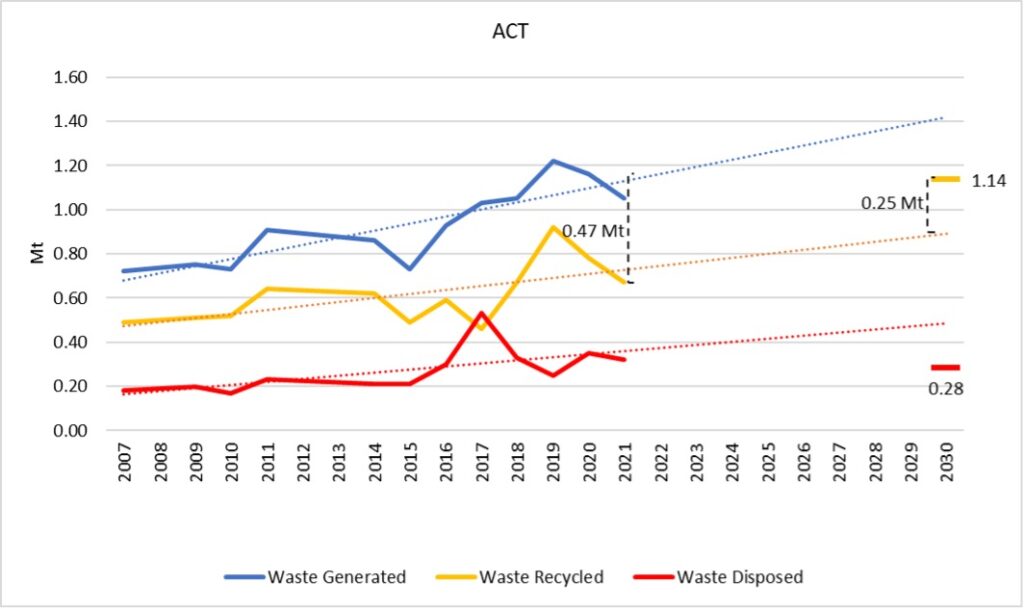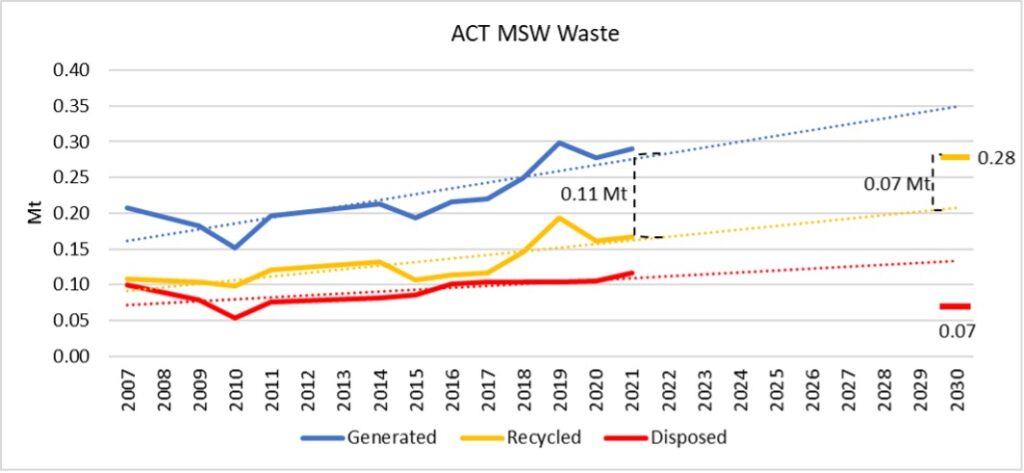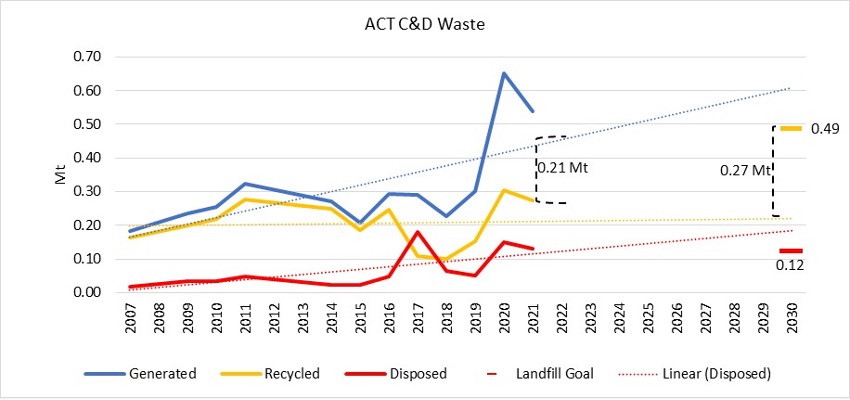ACT needs to move faster on waste reform

By Mike Ritchie, Director, MRA Consulting Group
The ACT recycling rate is 50% and therefore below the existing national average of 55%.
Without accelerated reform by the ACT Government, the Territory will also fail to achieve the National Waste Targets of 80% resource recovery and a 50% drop in organics to landfill.
Figure 1 shows that waste generation (blue line), like all States, is growing inexorably. (Source National Waste Database 2022. Updated Feb 2023). Recycling rates (yellow line) are keeping up with, and closely tracking waste generation. But waste to landfill (red line), in direct correlation with waste generation, also continues to grow.

Put simply, the ACT Government needs to do more, faster if it wants to achieve the Targets.
It is only recently that the ACT Government had a policy of zero waste to landfill. Figure 1 shows that is (and always was) unatainable.
If we project out the trend lines to 2030 we can see that the ACT needs to recycle an additional 470,000 t/yr by 2030.
If we adopt a very conservative view that the historic recycling rate will continue to increase with “normal reform” then the ACT will be short of the target by 250,000t/yr.
On waste to landfill the ACT will be sending 280,000t to landfill in excess of the Target in 2030 based on current trends.
Where does the improvement need to be found?
The following three figures break down the ACT waste by sector (household, commercial and construction).



Key observations include:
- ACT needs to find an additional 110,000 t of domestic recycling (e.g. organics, kerbside recyclables, household delivered materials, Container Deposits etc) by 2030.
- It needs to lift Commercial recycling rates by 290,000t in the next six years to 2030 (I, like many others, suspect the big drop in C&I generation, landfilling and recycling rates, is that it is being collected in the ACT but disposed or reprocessed in NSW and is no longer showing in the ACT data). Either way the ACT has a lot of work to do with C&I recycling.
- It needs to lift Construction recycling by 210,000t/yr to 2030.
I am like a cracked record on the mechanisms that are available to government to achieve this level of diversion. They are regulations (essentially bans to landfill) or pricing (usually landfill levies and grants).
Tweet
Nothing else works at scale.
While banning plastic bags and recycling coffee cups are worthy initiatives, they are no subsititue for structural reform.
Whilst I love everything about the “War on Waste” we need to go beyond the immediate “front of mind” waste issues like mobile phones and blister packs.
Based on historic trends, the ACT needs to recover at least an additional 470,000t/yr between now and 2030 and sustain that recovery rate. (Even on a conservative modelling basis the gap is 250,000t/yr).
You can only achieve that kind of change with meaningful policy interventions.
As I have said elsewhere, industry will provide the kit, the $ and the jobs.
But only if Governments gets the policy settings right.
To their credit the ACT Circular Economy Strategy 2023-2030 sets out a viable framework to achieve the Targets.
But it requires that the Government pull some policy reform levers, faster and harder than they have in the past.
Mike Ritchie is the Managing Director at MRA Consulting Group.
This article has been published by the following media outlets:




